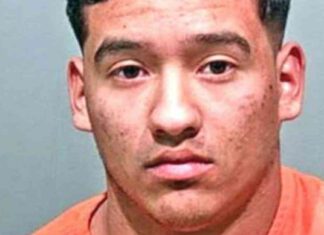Dr. Joseph Sakran came within a whisker of death at 17 years old. A fight escalated during a football match. He received a gunshot to the neck.
“That’s what led me to become a trauma surgeon,” the professor and director of surgical emergencies at Johns Hopkins Hospital in Baltimore explains over the phone.
He has seen people injured by bullets over the years. Maryland’s most populous city has been marked by violence for around ten years. From 2015 to 2022, it recorded more than 300 homicides per year, for a population of around 600,000 inhabitants. Not counting the injured.
Beyond the consequences on victims and their loved ones, violence has a price: injuries and their repercussions cost some US$557 billion annually, according to a Harvard study published in 2022. A bill borne in particular by individuals, hospitals, the health system and insurers.
Laws to tax guns have been proposed in a half-dozen states recently. California became the first to adopt it; Starting July 1, an 11 percent tax will be imposed on the sale of firearms and ammunition, to fund violence prevention programs. The implementation of a similar new tax will be put to a vote in Colorado in the November elections.
Maryland lawmakers also began studying a proposal this spring to tax the sale of firearms and ammunition. More than half of the money raised would go to the Maryland Trauma Physician Services Fund and a trauma center affiliated with the University of Maryland. The rest would go to prevention programs.
Dr. Sakran, who believes trauma services are underfunded, has campaigned for more gun control measures for years.
“I realized that no matter how much good you can do as a doctor, when someone comes to the hospital with a bullet in the head, there is very little you can do.” says the man who sits on the Brady Board to Prevent Gun Violence.
Pro-arms lobbies take a dim view of gun tax projects.
“The rights are given to citizens of the United States, and there should be no cost to exercise them,” said Andi Turner, spokesperson for the Maryland State Rifle and Pistol Association, by telephone. The organization is affiliated with the National Rifle Association (NRA), a powerful group defending the rights of gun owners.
Ms. Turner does not question financial need for trauma or issues of violence. But elected officials are targeting the wrong target, according to her, by placing the burden of criminal activities on legal gun owners.
“Do you think gang members pay taxes? », she comments.
Dru Stevenson, a South Texas College of Law professor who specializes in gun policy, refutes that argument. “The majority of guns used by criminals come indirectly from legal gun owners,” he points out.
In 2022, nearly 112,000 guns were reported stolen, according to the gun control organization Everytown, which compiled FBI data. More than half of these weapons were in a vehicle.
“People like to have their guns in their cars, and thieves know it: it’s the first thing they’ll check when a car is broken into, because it has resale value,” says Stevenson. .
But for Ms. Turner, it is first and foremost a question of respect for the Second Amendment, which allows citizens to own a weapon, she repeats. She does not oppose the 11 percent federal tax on gun sales, which has existed since the 1930s to fund a wildlife conservation fund, citing its long existence. But finds the idea of additional taxation “ridiculous”.
A new tax may be an attractive avenue for generating additional revenue – more than deterring future buyers, Stevenson believes. “But, sometimes, it’s also a double-edged sword, because a legislature might not provide money for this budget item, thinking that funds are already provided for this program,” he says.
In this election year, he expects issues about safety, violence and guns to remain at the forefront of voters’ concerns — with opinions on opposite sides of the aisle, following each party’s line.
“There is no simple solution to solving the problem of gun violence; it’s a series of measures that are needed,” he adds.





